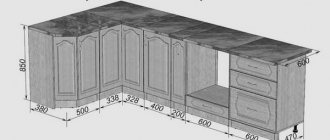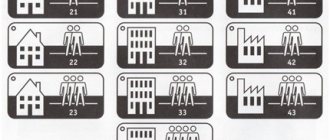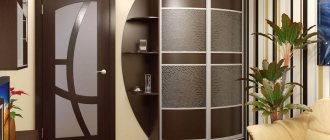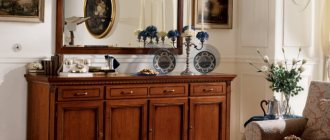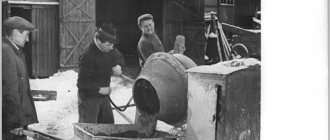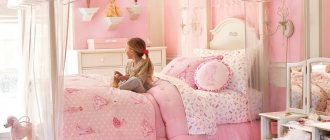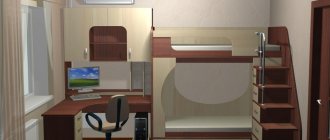26830
In every home, a closet is a piece of furniture that helps optimize space and properly organize the storage of things. In order to place clothes, shoes, accessories and other household items most efficiently, it is important to think through the filling of the closet in as much detail as possible. Depending on the location of the piece of furniture (bedroom, hallway, living room, children's room or study), the internal content may vary slightly. For example, you are unlikely to store seasonal clothes and shoes in the bedroom, and the closet in the hallway is not intended to accommodate a home library. However, absolutely all cabinets have a basic set of containers, drawers and accessories necessary for storing things.
ORDER IN YOUR CLOSET: MY SYSTEM
There are a lot of wardrobe organization systems - some suggest folding things by color, others by purpose, and there are those who fold clothes in sets at once. Perhaps one of these systems will suit you - look for it, there is a lot of material on this topic on the Internet.
In my closet, any harmonious logic does not work, I am prone to procrastination and impulsive decisions, I often get dressed at the last moment before going out, I don’t have time to sort through tops or rummage through dresses, and I am also not capable of planning and writing down outfits for a week in advance, I this process drives one into existential melancholy. In my case, only one system works: there should be few things, and I should see them all at once. Along with shoes and jewelry. Like this.
Our apartment doesn't have space to store a lot of things, we have a small built-in closet that my husband and I share, there is a grenier - a kind of attic under the very roof of our house where we store things out of season, and there is a small counter in the bedroom next to it. with a bed on which I hang what is actively being worn right now, and which my husband and I also share.
At the end of each season I do a big purge, selecting what will no longer be worn and donating it, what I will wear next year, packing it up and putting it in the attic. At the beginning of each season, I take out everything I have on the topic, decide what is missing, buy more and organize it according to frequency of use: jeans and what is worn less often and is stored in the closet for special occasions, what is actively worn lives on the rack - hanger (along with bags, of which I also have few).
Linen, T-shirts, belts and scarves are stored in a chest of drawers, and I store jewelry on a special homemade panel, which I attached to the inner door of the closet (take a hanger, hang a piece of thick material on the crossbar, fasten it along the edges with a stapler and using an ordinary safety pin, just hook your pendants and necklaces onto the fabric).
I opened the door and it was immediately clear what was in the arsenal. Something like this (sorry for the dubious aesthetics - handicrafts have never been my strong point, but this thing is really convenient):
Earrings and rings live in a jewelry box, nothing interesting, just like everyone else’s.
My system suits me, but it is not universal: some people like it when there are a lot of clothes, some need to see a color palette to select combinations, some cannot wear the same thing more than once a month, and so on. Develop your own system that will suit your tastes and personality traits.
Organizing your wardrobe: wonderful changes!
And at that moment, when I said goodbye to unnecessary things both psychologically and physically, wonderful events began to happen:
1. Suddenly, I began to better understand what I wanted (!) , what things and what style to pay attention to. It’s as if my entire wardrobe history was reset and I started from scratch!
2. It was much easier to maintain order with a small number of things. Fewer things just got easier to care for!
3. The things I left behind made me happy , I wanted to wear them, I didn’t get tired of them!
4. After decluttering, I realized that I am actually a person who does NOT like chaos , I love planning and making lists. So I started keeping a wardrobe organizer - with planning purchases by month and forms for caring for my wardrobe.
5. I made it a rule: to leave in the closet only things that I really like. I don’t just like you, I REALLY like you. And the same applies to purchases: no more “well, it’ll do, I’ll buy it just in case” - slowly, slowly, carefully looking at things, I began to select those that reflected me.
6. My style began to improve, even without going to a stylist - just getting rid of everything unnecessary, unloved things and things from my past life - suddenly it became clear: who I am now and what I want to wear!
7. My wardrobe is now in order , I have already begun to approach it without fear - why worry, because there is only what I really love!
At the same time as I was decluttering, I became interested in the KonMari method and the flylady system, read the wonderful book by Dominique Loro “The Art of Living Simply” - and these women and their conscious approach to life and home organization helped make my wardrobe even more organized.
ASSET EXAMINATION: GENERAL CLEANING
At the end and beginning of each season, it's worth taking an hour to sort through your arsenal.
The easiest way is to sort by category: tops, skirts, dresses, knitwear, jackets, trousers, jeans. Take out everything you have, lay it out on the bed or on the floor and look at it with a master’s eye. Our task is to remove the unnecessary, leave the valuable and clear space for the new.
In each category, quickly go through the items and put them into four piles:
- what remains (things in good condition, something that definitely suits you, is loved and fits well)
- what goes into rags or is thrown away (stretched, torn, faded, things in pellets, faded, and so on - do not store rags, feng shui promises all sorts of bad things for plushkins)
- something that can be given away (things in good condition, but not wearable - something that is small/large, doesn’t fit well, is not your color, not your style, has gone out of fashion, and is not of particular value)
- something that can be sold/exchanged (things that don’t suit you, have been worn rarely or not worn at all, and still have value - branded items, designer lines of mass market brands (designer collections in the lines of H&M, Zara, etc. sell well )
You can make a fifth pile - “I can’t figure out what to do with this.” These things can be put in a bag and put away somewhere away, so that after 3 months you can take them out and look at them with fresh eyes. If in three months you haven’t thought about them even once, then feel free to give/sell/exchange – you definitely don’t need them.
In this way we go through the entire contents of the closet: clothes, underwear, tights, belts, shoes, scarves and bags. I do the same trimming of my husband’s things, getting rid of old things to loud cries of “wait, I bought these jeans with my first salary!..”
How to properly store clothes
Suppose there is one closet in the house in which things are supposed to be stored for all seasons. In this case, how can you clean up your closet and make it convenient and enjoyable to use?
Practice shows: it is convenient to store things that are not related to the current season in separate containers or bags, putting them on the top shelf. Containers must have ventilation holes to allow air to enter. In a confined space, without air, even clean clothes acquire a stale smell. To organize your closet with clothes, especially for storing out-of-season items, a suitcase is suitable if it is not used constantly, but only during vacation or a business trip.
Vacuum bags have proven themselves to be excellent. You can pack clothes in them depending on the season. When it’s already warm, warm sweaters and other things go into a bag and, for example, on the top shelf. This saves a lot of space in the closet.
Items to be stored must be washed or cleaned. Moths love dirty clothes that have certain body odors. Outerwear should be placed in covers made of breathable material, allowing it to be ventilated. You need to put moth repellent in the case.
DEVELOPING A STRATEGY: COLLECTING SETS AND SETTING GOAL FOR SHOPPING
Once you have only what you like and fits well, put all the things on the surface again and sort the things in each category into two piles - “there is something to wear with”, “you like the thing, but not to wear it with” how".
Ideally, of course, 90% of things should be combined with each other and put together in different sets (dress + shoes is also a set), the remaining 10% of things that suit you but don’t have a pair can wait for their finest hour until you come across this pair in the store.
After that, take your phone and play fashion blogger - put together different sets and take pictures. And after that, put things in the closet according to the system that is convenient for you - by purpose (tops with tops, jeans with jeans), by color (dark, light, colored), by type (basic, casual, going out, evening), or in sets at once (for example, top + skirt on one hanger).
We photograph the remaining items – those that are missing a pair – and mark the pictures as favorites, so that in the store it will be easier to choose what will go with them.
After this exercise, you can make a list of things that you need to buy for the season. Or, if you're doing this end-of-season purge, before you pack away your items for storage (which makes sense—if you're only keeping what you'll wear next year, those items will take up a lot less space), make a list of what you need. It makes sense to buy on sales (for example, T-shirts, ballet shoes, tote bags, hats, tunic dresses, cashmere, classic blouses and shirts will definitely be worn in a year - why not buy them in advance at a good discount?).
Parsing and sorting
Step one is to take absolutely everything out of your wardrobe. This will make it easier to decide which ones are needed and which ones are not. Go through the items of clothing one at a time, putting them in different directions depending on your decision: to keep, give away or sell, throw away.
When your next dress or T-shirt is in doubt, ask yourself supporting questions.
- “Have I worn this for the last year?” If the item was in the closet, then, most likely, it can continue to lie there idle for more than one month or even a year. It's better to free up space rather than storing things you don't need in your wardrobe.
- “Would I buy this item now?” Imagine that on your last trip your luggage and a good half of your wardrobe were lost and now you need to put it together again. Would you buy what you hold in your hands to replace what you lost? If the answer is a clear “yes,” then the item should be kept.
- “Does it need a replacement?” Assess the condition of the item you took. If there are stains, pills, snags and other signs of wear on it, then it is better to replace it with a new and fresh one.
When you're done with sorting, start by focusing on the things you decided not to keep. Place unwearable items in the trash pile. Items that are wearable, but have lost your liking, can be given away. Or sell it so it doesn’t go to waste. And put what should go back into the wardrobe into piles: tops, trousers, skirts, underwear, socks. This will help you compare the volume of clothes you have with the capacity of your closet.
ORGANIZATION OF FUNDS: STORING ITEMS
Nice hangers. In fact, hangers are the silent killers of clothes, especially knitwear. I’ve already written before and I’ll repeat it: I personally have never been able to find a hanger that wouldn’t pull out knitwear, so I use my grandmother’s method and store knitted cardigans and wrinkled cashmere like this:
Good hangers have rounded shoulders, preferably silicone ones, and soft holders with silicone inserts for trousers and skirts (plastic clips damage the fabric and leave marks).
If there are a lot of clothes in the closet, and things hang pressed together, so that you have to force them apart to hang something, then your things will break down faster - they will become covered in pellets, even if you don’t wear them (every time you will be squeezing something in or taking it out, things will fray), wrinkle and break, wear out, acquire an unpleasant smell (air does not circulate in a crowded closet, and even one not very fresh item will quickly impart a corresponding aroma to all the other things in the wardrobe). And if you have problems with moths, then a closet overflowing with things is a Michelin-starred restaurant for it.
DRAWERS FOR LINEN, BELTS, SCARFS
A chest of drawers is an excellent solution for storing such items; if there is no chest of drawers, then buy organizer boxes, place them on the shelves of the closet, and put things in them so that you can easily see everything you need.
ATTACK: SMART SHOPPING
I’ve already written before and I’ll repeat it again - smart shopping is when you spend money on what you need. If you bought something at a big discount and then don’t know where to put this thing, then you threw money away.
There’s nothing wrong with that; after all, sometimes you just want to buy some crap without deep analysis and studying the consequences – and that’s normal. But if the size of your closet is not infinite and your resources are not unlimited, then it makes sense to approach your purchases more consciously:
DECIDE YOUR SILHOUETTE AND PALETTE
We are all different from each other and from the standards by which clothes are cut and sewn. But there is good news: we live in an era of postmodern fashion, when all styles and all silhouettes are constantly in demand. So every season there is sure to be something in the stores that suits you.
There is a lot of information on silhouettes and cuts that suit different body types on the Internet; if necessary, write in the comments, I will make a separate post on this topic (although I’m unlikely to tell you anything new, but still).
It’s worth dealing with this issue once and for all: what jeans suit you, what cut of dresses, shirts, skirts, jackets compliment you personally. The same applies to the color scheme - every season there are 1-2 colors that come to the fore, but you can always find what suits you (information about the phenotype is also easy to find on the Internet, or again, write in the comments - I I'll post it in a separate post).
MAKE A LIST BEFORE GOING TO THE STORE
As you declutter your closet, be sure to make a list of what you're missing for the current season, or, in the case of end-of-season sales, what you'll need next year. Once you decide on the gaps, you can go to websites or go shopping - there is a high chance that you will spend money on the things you need.
RULES OF “THREE SETS” AND “IN-OUT”
A good trick that helps you assess the value of the item you are purchasing is - before you buy something, imagine what you will wear this item with. If with her and what you already have, at least three sets are going to happen, then go ahead. If not, let’s move on to the next question: are you willing to spend extra money to buy what’s missing? And is this thing even worth the effort?
The “in-out” rule is my favorite, although it is fascist. Every new thing replaces something old. A very simple and sure way to avoid adding clothes to your closet and maintain the required minimum.
You can only keep your closet organized when you have a system and when you have complete control over your wardrobe. This will help you reduce the famous “full of things, but nothing to wear!” to a minimum, and will also save you from the need to spend time every morning thinking through sets, trying on, searching for the right things in the depths of a closet filled with clothes.
Clear out space, think over your shopping strategy, organize things in your closet the way you want and buy only what you need - this is the easiest way to clean up your closet once and for all.
_______________________________________
Did you enjoy this post and want to learn more about wardrobe essentials and how to shop and select “your” pieces? You may be interested in my book “Anatomy of a Parisian wardrobe: items, brands, combinations”
ANATOMY OF A PARISIAN WARDROBE
This book is based on the Parisian Wardrobe training, which focuses on the basic wardrobe in classic French style - slightly casual, slightly unisex, minimalistic and very functional.
In the book I talk about the main constants of the Parisian wardrobe, and about the basic Parisian combinations: what to wear, what to wear with, how to wear it. For convenience, the book is divided into 3 large blocks (“bottoms”, “tops”, “outerwear”), and in each block I talk in detail about the items that form the basis of the Parisian style.
TO LEARN MORE
Storage systems for different types of clothing
Closets where clothes are stored contribute to impeccable order in the house, when you don’t have to frantically search for the right thing, and you know exactly where everything is located. At the same time, well-designed storage systems make it possible to free up space from additional pieces of furniture that clutter the room. Their practicality and functionality depend on how well thought out the interior contents of the cabinets are.
Shelves, racks, drawers, baskets, pantographs, brackets - everything must be planned and selected in the most careful way. There are storage departments that have a narrow focus and specific sizes. For each type of clothing, storage systems are selected according to the dimensions specified by the customer. All racks and shelves for storing wardrobe items are developed by manufacturers taking into account proportions, suitable spacing between shelves and racks, which will be optimal for comfortable storage of things. The height of the hanger bar is calculated so that it is convenient to remove and hang clothes; if the crossbar is located high, a pantograph is provided - a kind of “elevator” for clothes, which makes it easier to access things located at high heights. Various collections for filling furniture will help you optimize your closet space as much as possible and turn it into an ideal place to store necessary things.
When selecting elements of the internal filling of each cabinet, it is necessary to take into account the characteristics of the room, the lifestyle of the owner of the house, his requirements and wishes, calculate the number and sizes of the necessary shelves, drawers, racks, hangers, additional elements in the form of retractable mirrors or an ironing board, that is, transform the cabinet to specific needs of its owner.
To achieve maximum convenience, certain distances should be maintained:
- between shelves: for things 30 cm, shoes (without high heels) - 20 cm;
- compartment height to bracket: for outerwear - 160-180 cm, dresses - 150-180 cm, jackets, jackets, shirts - 120 cm;
- compartments with devices for storing trousers folded in half - 100 cm, length - 140 cm.
For underwear
Such a delicate piece of clothing requires special care. If you have enough space in your closet, you can select a compartment and hang each set on special plastic or fabric hangers - this is very convenient, and the laundry is stored neatly. You can arrange your laundry more compactly in special honeycomb drawers (up to 30 cm deep) or organizers with cells (a couple of centimeters smaller than the box in which it will be located), where you can put bras, panties, socks, and tights. In small closets, to store these elegant things, it is worth adapting a drawer, equipping it with a container divider, where underwear is stored in one compartment, and socks and tights in the other. There are special plastic partitions on sale that can be installed in a drawer and put underwear items in the cells. With this approach, you will always have perfect order.
For wrinkle-resistant items
Large open shelves are best for wrinkle-resistant items. This makes it easy to fold and remove wardrobe items when needed. The central part of the cabinet is usually equipped with such shelves. They store knitted products that, when folded, are not subject to deformation and do not wrinkle. The width of such a storage compartment is 50 cm. Knitted items cannot be hung on hangers, since the product can stretch out and lose its original shape. Larger and heavier clothes should be placed on the shelves from below, and light ones from above, so they will not be pressed down and wrinkled. Wrinkle-resistant items can be placed in baskets, choosing their size so that the folded clothes are located freely.
For things on hangers
Regardless of the size of your closet, there will always be a place to put things on hangers. This is convenient, allows you to carefully store clothes, and, if necessary, easily and quickly get the right thing. To figure out what height to plan for clothing compartments on hangers, you need to measure the longest items. Of course, it’s not worth adjusting the height of the bar just for the sake of an evening dress.
Since items stored on hangers have different lengths, the size of the compartments for placing them is also provided from 1 meter to 1.8 m.
When determining the width of compartments for clothes, it should be taken into account that the normal distance between hangers is 5 cm, dense - 2 cm. The storage system must have good ventilation to avoid unpleasant odors. The width of the hanger hangers ranges from 34 cm to 51 cm, which depends on the size of the clothes; the depth of the closet is 50-60 cm.
It is best to provide several compartments of different lengths for storing outerwear and lightweight ones. If there is only one such compartment (rod length 100-120 cm), a support is needed - a vertical rod attached to a horizontal one. In tall cabinets, the compartment is equipped with a pantograph, a special device for free access to various types of clothing. This device allows you to use the entire cabinet space. For narrow closets, retractable cross brackets are suitable, which will save space and allow you to place clothes more compactly.
A pantograph is a very convenient thing. There are mechanisms that are pulled out manually. For more convenient use, you can order a cabinet with a built-in pantograph, which can be easily controlled using a remote control.
For accessories
Clothing accessories tend to always get lost. To prevent this from happening, manufacturers suggest equipping cabinets with special elements: holders for ties and belts or shelves with compartments. Small accessories can be conveniently stored in small drawers or mesh shelves. Scarves, shawls, umbrellas - on hooks that are attached to the closet door.
There are a lot of original, unusual hangers and organizers for accessories (photos on the Internet will help you make a choice), which will once and for all save you from constantly searching for the right item and help you organize their storage:
- for scarves, scarves, stoles - hangers with many holes of various shapes;
- for ties - special crossbars with or without clamps;
- for belts and sashes - hangers with hooks.
Trousers
Another item of clothing that requires special storage conditions is trousers. Many men are very jealous of the correct placement of this wardrobe item, because perfectly ironed trousers lose their prestigious appearance on shelves. The pantsuit in this case will be a necessary element in your closet. There are several options:
- roll-out trouser holder;
- retractable trouser;
- folding hanger for trousers and belts;
- pull-out trouser shelf with basket.
The trousers are attached to the far or side wall of the closet; they can be single-sided or double-sided.
For shoes
Shoes are usually placed in the lower area of the closet. Storage areas are equipped with drawers, shelves (inclined or retractable), and elements in the form of lasts, which allows you to maintain the shape of the shoes. In this case, the size of the objects and the height of the boot top are taken into account. Manufacturers offer several types of shoe storage systems:
- retractable - with special pins mounted on a movable frame;
- mesh with shelves or movable hooks;
- folding drawers and shelves with compartments;
- open shelves located at the bottom of the cabinet;
- hangers with clothespins for placing boots.
An interesting design idea is to place shoes on a rotating rack located in the lower compartment of the closet.
For bags
For storing bags in the closet, you can select a separate shelf or attach hooks to the door. Moreover, it is necessary to take into account that it is better to store heavy bulky bags on shelves, and hang lighter and softer ones on hooks or special holders. Large items (suitcases and travel bags) should be placed in the upper part of the closet or on the mezzanine, since they are not used often.
A few tips for storing things:
- items made of knitwear and wool, after washing and airing, should be carefully placed in plastic bags, then put on shelves, so they will look good even after long-term storage;
- if the height of the closet is not enough for long dresses, it is recommended to throw their hem over the crossbar of the hanger to avoid contact with the bottom of the furniture;
- Skirts and trousers are best hung by attaching them to hangers with special clothespins;
- hats should be placed in boxes and then put away in a closet;
- Closed storage systems should be provided for shoes.

